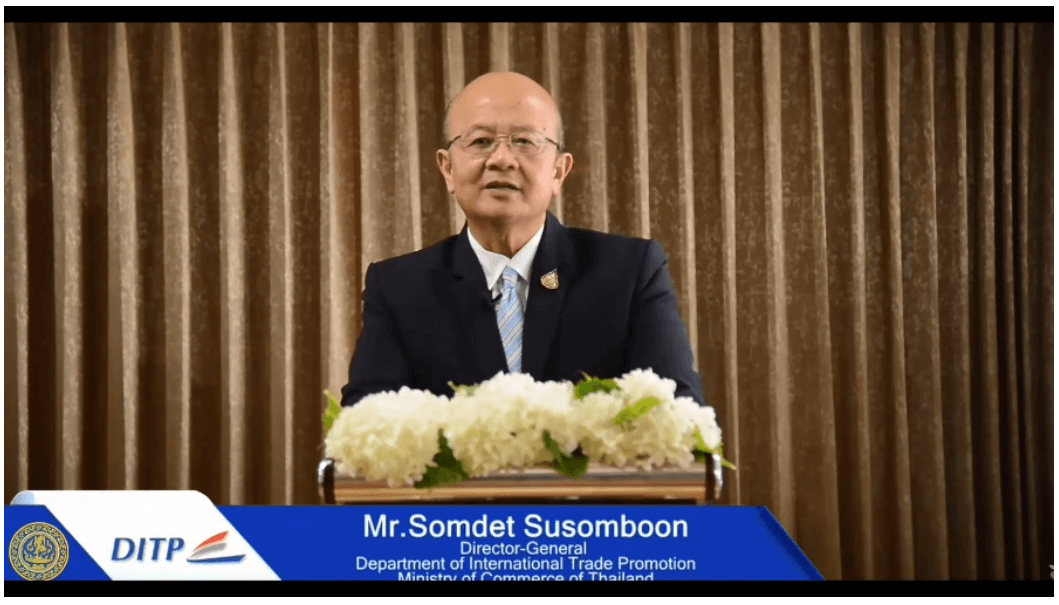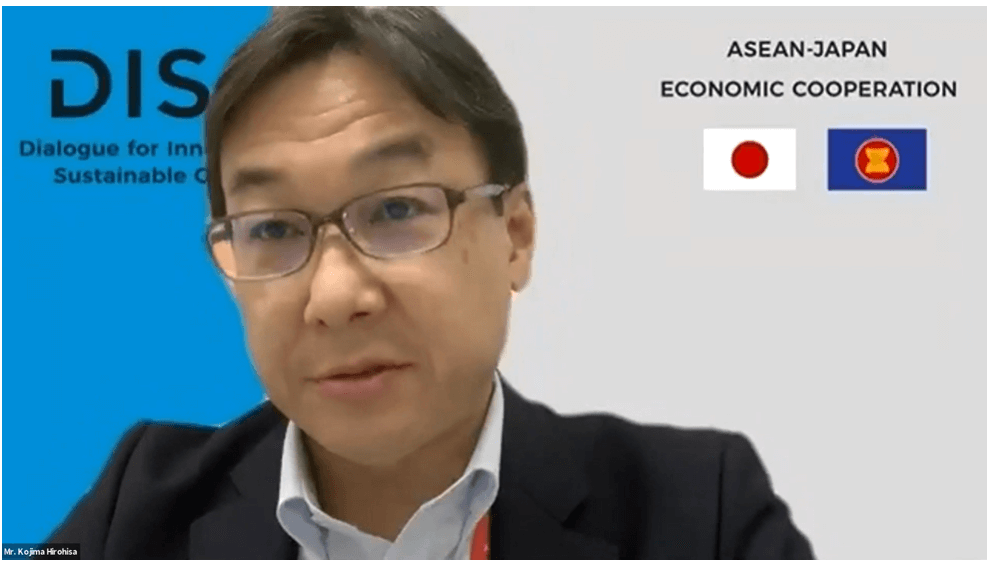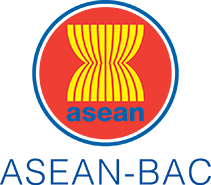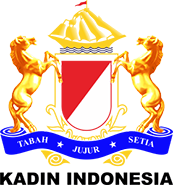summary
November 16th 2020
2nd Webinar Enhancing Digital Trade Connectivity in ASEAN

Agenda
1. Opening remarks from Ministry of Commerce, Thailand
2. Keynote speech from ASEAN-BAC Thailand
3. Keynote speech from TradeWaltz Inc.
4. Panel discussion among ASEAN-BAC, TradeWaltz, ASEC, Singapore Customs and Mitsubishi Corporation
Speaker
-
Mr. Somdet Susomboon
Director General, Department of International Trade Promotion, Ministry of Commerce, Thailand -
Mr. Kobsak Duangdee
Member, ASEAN Business Advisory Council (ASEAN-BAC) Thailand / Secretary General, The Thai Bankers’ Association (TBA) -
Mr. Kojima Hirohisa
President and CEO, Representative Director, TradeWaltz Inc. -
Mr. Nitas Polachai
Senior Officer, Project Management Office Trade and Facilitation Division, The ASEAN Secretariat (ASEC) -
Ms. Angie Teo
Head, International Relations, Singapore Customs -
Mr. Hirakuri Takuya
General Manager, Digital Strategy Dept., Mitsubishi Corporation
Moderator
-
Mr. Wada Yuhei
Chief Representative, AMEICC Secretariat
Webinar Summary
This webinar was held as the 2nd series of Webinar, a part of the “Dialogue for Innovative and Sustainable Growth (DISG)”, endorsed by ASEAN and Japan Economic Ministers at the AEM-METI Meeting on August 28th 2020. In this webinar entitled “Enhancing Digital Trade Connectivity in ASEAN”, key figures in the field of digital trade/trade facilitation from ASEAN and Japan discussed the benefits brought to relevant players by trade digitalization, its future potential and the expected Japan’s contribution to ASEAN.
(Opening Remarks)
Mr. Somdet Susomboon put the emphasis on the importance of trade digitalization and trust ecosystem for digital trade after the Covid-19 Pandemic. In moving towards digital transformation in ASEAN, Japan is expected to contribute to narrowing the digital connectivity gap among ASEAN. “Regional Digital Trade Connectivity in ASEAN” will not only promote digital connectivity within ASEAN region or between ASEAN and Japan but also contribute more to competitive, resilient and well-connected East Asia.
(Keynote Speech from ASEAN-BAC)
Mr. Kobsak Duangdee explained the current ASEAN-BAC digitalization project, “Regional Digital Trade Connectivity (RDTC)” with the introduction on its purpose and potential advantages for ASEAN including contribution to AEC Blueprint 2025. RDTC project is currently being initiated by both the ASEAN Business Advisory Council and APEC Business Advisory Council. The RDTC project of ASEAN-BAC is supported by a Japanese and a British consulting firm, where they are analyzing gap between AMSs and creating a recommended roadmap of digital trade ecosystem. ASEAN and its major partner like Japan must work together to jointly accelerate digital trade transformation under COVID-19 pandemic.
(Keynote Speech from TradeWaltz Inc.)
Mr. Kojima Hirohisa introduced Japan’s new digital trade platform “TradeWaltz” focusing on its strength of covering various industries and trade documents, and the usability function for MSME with reasonable price and simple interfaces. TradeWaltz is expected to reduce cost and time based on an experiment in Japan. The future plan of TradeWaltz was also explained that they will expand users and connect to the customs in Japan and extend the service to ASEAN at first overseas.
(Panel Discussion)
At first, Mr. Nitas Polachai of ASEC commented on the importance of trade facilitation from the perspective of the government sectors and the outline of ASW as one of the relevant activities initiated by ASEC.
Subsequently, Ms. Angie Teo of Singapore Customs provided the Singapore’s needs to connect their own trade platform with external ones to enhance trade facilitation since Singapore’s trade value is 2 to 3 times as much as the GDP.
Following Ms. Angie, Mr. Hirakuri Takuya of Mitsubishi Corporation conveyed their company’s expectations for the digital trade platform from the perspective of an investor to TradeWaltz and its user. He put emphasis on the impact that TradeWaltz enables us to reduce the workload by nearly 44%.
The panelists also discussed what kind of collaborations would be expected among digital trade platforms or between government and the business, and what elements are required in digitalizing trade procedures. Ms. Angie pointed out that digitalization in ASEAN requires the technological readiness and the establishment of legal basis as an assurance to the users, and the other panelists mentioned their expectations for the future connectivity among RDTC projects, TradeWaltz and ASW. All panelists agreed that public and private sectors should collaborate with each other, and Japan would contribute to promoting RDTC and ASW especially in sharing knowledge/experience and facilitation of discussion in ASEAN.
Opening Remarks

Mr. Somdet Susomboon Director-General, Department of International Trade Promotion, Ministry of Commerce, Thailand
Global COVID-19 pandemic has disrupted the global value chain and economic integration particularly in the international trade sector where the people’s movement and supply chain have been restricted. Despite this issue, digital trade has immensely accelerated and become a core aspect of the trade in the modern economy. It is beyond doubt that digitalization will be the main foundation of future businesses. Although the pandemic is expected to be over soon, the new lifestyle continues as digitalization becomes a major part of the new normal.
However, digital trade cannot flourish without decent digital connectivity. According to ERIA, efficient digital connectivity requires 3 important elements; 1) data free flow with trust, 2) logistics for free flow of goods and services, and 3) financial connectivity to facilitate cash flow.
While digitalization provides us the opportunity to connect with a new trade platform, implementation of these elements into an actual trade still requires physical efficiency. Thus, improvements in both physical connectivity and trade supporting services within ASEAN is crucial. Additionally, in order to make favourable ecosystems, ASEAN members have to collaborate and overcome challenges in regard to E-payment systems such as security, privacy, credibility, reliability, and efficiency. Related rules and regulations among ASEAN countries must be streamlined and standardized.
Digital transformation brings opportunities and challenges. In terms of opportunity, access to ICT platform and devices may offer more choices to reach domestic and foreign markets, often with less cost than the traditional channel along with benefits that can be drawn from the regional trade agreements.
As ASEAN members move towards digitalization, it is important to encourage the integration of the ASEAN cross-border E-Commerce platform at the regional level. With support and contribution from our major contributor and partner, Japan, I hope that we can narrow the digital connectivity gap among ASEAN countries; more specifically the technology gap, and fill in a loophole in our digital ecosystem. I believe the initiative of “Regional Digital Trade Connectivity in ASEAN” will not only promote digital connectivity within ASEAN region and between ASEAN and Japan but also contribute more to competitive, resilient and well-connected East Asia.
Keynote Speech

Mr. Kobsak Duangdee, Member, ASEAN Business Advisory Council (ASEAN-BAC) Thailand/Secretary General, The Thai Bankers’ Association (TBA) provided his insight on Regional Digital Trade Connectivity (RDTC) and regional trade projects of ASEAN-BAC
Regional Digital Trade Connectivity (RDTC)
There are 2 projects on RDTC; “Digital Trade Connect” managed by ASEAN-BAC and “Digital Trade Finance Lab” managed by APEC-BAC.
Purpose of RDTC is to improve the efficiency in terms of:
- Processing cost; Elimination of document handling process
- Time of trade transactions; Faster via automation process and efficient without redundant procedures
- Connectivity of the entire process; Paperless online end-to-end process
- Promote platform interoperability; Shared infrastructure system used among stakeholders worldwide
On the national level, the goal is to create a National Digital Platform; a platform to connect all international business related activities (bank, insurance, customs etc) occurring in each country through digital processes.
On the regional level, ecosystem of regional trade platform with guidelines, standardized practices and documents are vital.
The research shows that digitalization drastically reduces the time and cost required for the trade process particularly for MSMEs. According to an experiment in Japan, the cost reduction rate was estimated 56% while in Thailand it was estimated 60%. Digital trade platform would contribute to AEC Blueprint 2025 in trade facilitation and ICT/E-commerce agreement as well.
Regional Trade Connect Project of ASEAN-BAC
ASEAN-BAC is asking two consultants funded by Japan and UK. They are analyzing the digitalization gap between AMSs and creating a recommended roadmap of digital trade ecosystem.
ASEAN-BAC began to discuss “Regional Trade Connect Project” since January 2019 and made progress even during COVID-19 pandemic. ASEAN-BAC will receive reports from consultants by the end of this year.
In conclusion, ASEAN and its major partner like Japan must work together to jointly accelerate digital trade transformation in both public and private sectors under the pandemic.
Keynote Speech

Mr. Kojima Hirohisa, President and CEO, Representative Director, TradeWaltz Inc. explained their digital trading platform “TradeWaltz”, its goal and roadmap
What is TradeWaltz?
TradeWaltz is a business trading platform powered by blockchain technology, which facilitates cross-industry transactions by providing one-stop platform for every user from various industries.
Initially, a cross-industry consortium for paperless international trade was created in 2017, including banks, insurance companies, trading companies and shipping companies. We have discussed issues on trade procedures both from legal and technical perspectives and finally launched a new platform “TradeWaltz”.
The goal of TradeWaltz is to create an ideal digital trade platform and put emphasis on 3 aspects; 1) covering various industries and not specializing in a particular industry, 2) providing wide range of trade documents, 3) utilizing vast amount of data in the platform to create new business ecosystem.
TradeWaltz facilitates big enterprises as well as MSMES by providing services with reasonable cost and simple interfaces.
TradeWaltz is expected to reduce cost and time. According to the joint experiment with the Japanese government and relevant companies, the platform significantly will reduce trade operation time by about 45% and cost by more than 50%.
TradeWaltz Plan to expand in the future
In collaboration with the ASEAN-BAC RDTC project, we hope to establish a neutral business entity operating a national trade platform in each country and connect each one of them. We’re looking to extend the services to ASEAN first, but open for countries in Asia Pacific region as well.
Currently, TradeWaltz’s future roadmap plan is divided into 4 parts
1) Began providing services commercially and expanding users
2) Connect to Japan National Single Window
3) Connect to overseas platforms – ASEAN RDTC, Thailand, Singapore etc.
4) Achieve 100% Paperless Trade
Panel Discussion

Trade facilitation from the perspective of the government sector
Mr. Nitas
- The government has a role of trade facilitation on the national, international, and regional level. At the ASEAN level, for example, the ASEAN Trade in Goods Agreement (ATIGA) aims to achieve the free flow of goods to reduce trade barriers, lower trading cost, and enhance accessibility to a larger market for businesses.
- Earlier in 2020, all ASEAN member states have launched a government-to-government IT platform that connects all National Single Window to allow free flow of digital documents between the members countries. Currently, ASEAN member states are using the ASEAN Single Window to submit the certificate of origin which is used for preferential tariff treatment.
- ASEC would like to extend the scope of ASEAN Single window and connect with other partners outside the ASEAN region.
Why the Government of Singapore Regards Trade Digitalization as Important?
Ms. Angie
- It is critical for Singapore because its annual trade value is 2 to 3 times as much as the GDP.
- Trade ecosystem can be expanded to benefit not only trade with Singapore, but also trade within ASEAN and trade through Singapore. So, we started exchanging documents via ASW the earliest.
- Digitalization allows us to do cross-border trade and exchanging documents smoothly, and Singapore will do so through Network Trade Platform (NTP); a Singaporean government’s platform.
Expectation of Digital Trade Platform from Trading Company
Mr. Hirakuri
- Currently in Japan, trade transactions are required a significant amount of paperwork. For example, one export and one import process could take up to 72 hours, but TradeWaltz enables us to reduce the workload by nearly 44%. Other countries in ASEAN region are facing the same challenge and the digital trade platform will create a great impact on improving the overall working process.
- It is the company’s strategy to bring positive disruption to the existing industry's framework, thus Mitsubishi Corporation decided to invest in the platform to accelerate the digitalization of the trade operations.
Collaboration with Other Platforms and TradeWaltz Strength
Mr. Kojima
- In response to the users’ demand, TradeWaltz will collaborate with other platforms for complementary relationship, utilizing their capability to cover various industries and trade documents. Other platforms have their own strengths, for example, TradeLens, one of major trade platforms, has strength in the field of marine transportation. Therefore, TradeWaltz can provide financial transaction function to the users using TradeLens, for example.
- Furthermore, Mr. Kojima emphasized a simple web interface of TradeWaltz which MSMEs can easily utilize and named TradeWaltz “MSMEs-friendly trade platform”.
Mitsubishi Corporation’s TradeWaltz Utilization Plan
Mr. Hirakuri
- Mitsubishi Cooperation plans to work with Vietnamese MSMEs’ partners while fully digitalizing Letter of Credit (LC) for the trading of chemical related products with TradeWaltz.
What is the Important Element of Trade Digitalization in ASEAN?
Ms. Angie
- Towards trade digitalization, there are two unique issues to overcome in ASEAN; 1) the technological readiness to support the system, 2) the establishment of the legal basis as an assurance to the users.
- Commitment by both the public and the private sector is critical for them to see the change and the value in digitalization to promote digitalization. The public and the private sector must work together and there are many opportunities to do so in trade digitalization.
How RDTC will be Promoted in ASEAN?
Mr. Kobsak
- ASEAN-BAC will analyze the recommendations and survey research from the consultants. Based on analysis, ASEAN-BAC will promote pilot projects in some ASEAN countries and seek connectivity with government-led digitalization projects as well.
- For enhancing digitalization, ASEAN-BAC expects Japan to cooperate with 1) formulation of ASEAN-Japan joint policies to promote digital trade, 2) working together on knowledge sharing and capacity building at government level, 3) promoting international digital transaction between ASEAN and Japan, 4) support for the RDTC project initiated by ASEAN-BAC.
Is There Any Possibility that ASEC will Collaborate with the ASEAN-BAC Initiative or TradeWaltz?
Mr. Nitas
- A big picture, as an overall solution, in which trade platforms from the public and the private sector can complement their functions each other, should be developed in order to create a digital trade ecosystem in ASEAN. In that respect, close collaboration between the government and the business sector is needed.
Ms. Angie
- ASEAN-BAC contribution to the trade digitalization and transformation is critical, and it is a necessity to conduct more dialogues between the public and the private sectors in strengthening both engagement within ASEAN and beyond to bring out the best potential. Regarding digitalization, the private sector moves a lot faster. In this regard, ASEAN-BAC could act as a catalyst to drive such dialogues and pursue possible joint actions with the governments.
Why Digital Trade Connectivity in Thailand can be Promoted by the Business sector?
Mr. Kobsak
- In Thailand, both the government and the private sectors have been working together to promote the RDTC project. Especially when creating an ecosystem and developing a National Digital Trade Platform, support from government sector was indispensable since the connectivity between platform of private and NSW/ASW was needed.
- Putting emphasis on close collaboration between the government sector and relevant business organizations including the Chamber of Commerce and logistics, Mr. Kobsak pointed out that it is important for bank to engage in the discussion as they can support their MSMEs customers based on digital transactions.
TradeWaltz’s background how to promote industry-led trade digitalization in Japan
Mr. Kojima
- We established a consortium by a variety of companies related to trade business to discuss all aspects of trade business flow. We realized that it would be difficult to design a good trade platform by discussing in limited industries, so we were able to create a consortium for cross-industry discussion, which was our key for success.
Importance and Impact of Digitalization of Trading Procedures for Trading Companies
Mr. Hirakuri
- As the expected areas of improvements by digitalization of trade procedures, three points were provided; 1) users can expect approximately 44% increase in process efficiency along with major cost reduction, 2) employees can stay safe and get the work done from home during a global pandemic, 3) compliance check is much simpler through a standardized process.
Expectations for ASEAN-Japan Economic Corporation
Mr. Kobsak
- Joint collaboration between ASEAN and Japan is expected for sharing knowledge and experience.
Mr. Nitas
- Collaboration on policies and techniques among all stakeholders at both regional and international levels is important and Japan’s support would be helpful for its facilitation.
Ms. Angie
- Involvement of Japan in the ASEAN Single Window dialogues as soon as possible is expected.
Mr. Kojima
- TradeWaltz would like to utilize Japan’s experience to promote digitalization movement on trade document across the ASEAN region
Mr. Hirakuri
- Members of the ASEAN region are important partners for a Japanese company, and we are looking forward to working closely together to transform our trade operation through digitalization.












